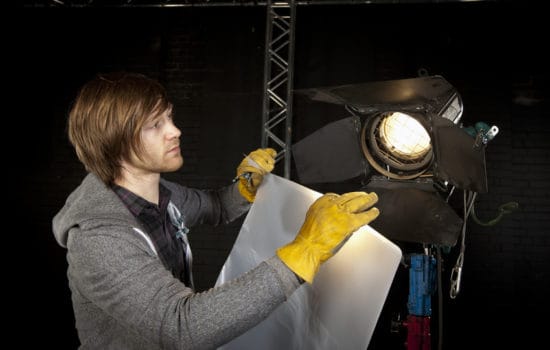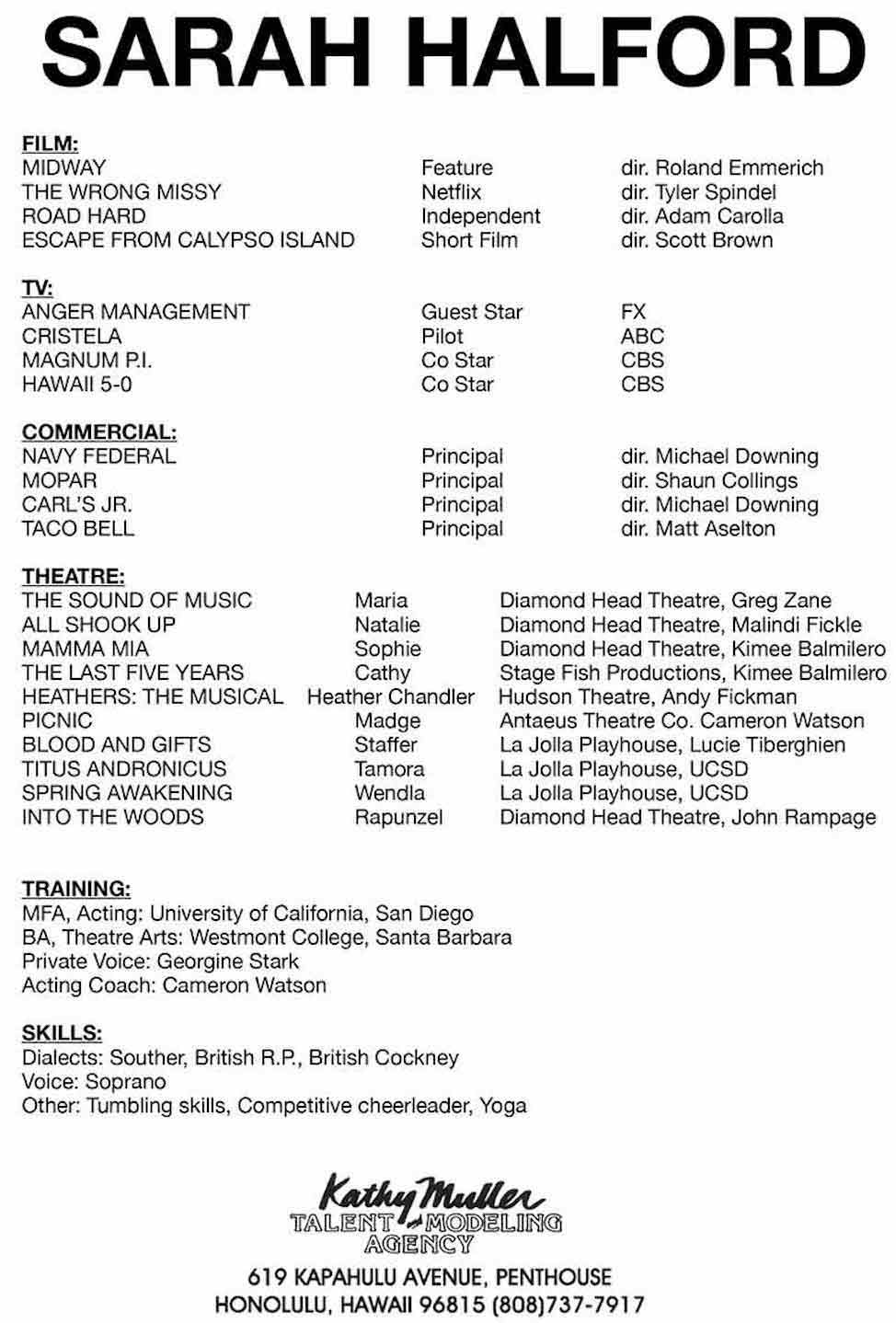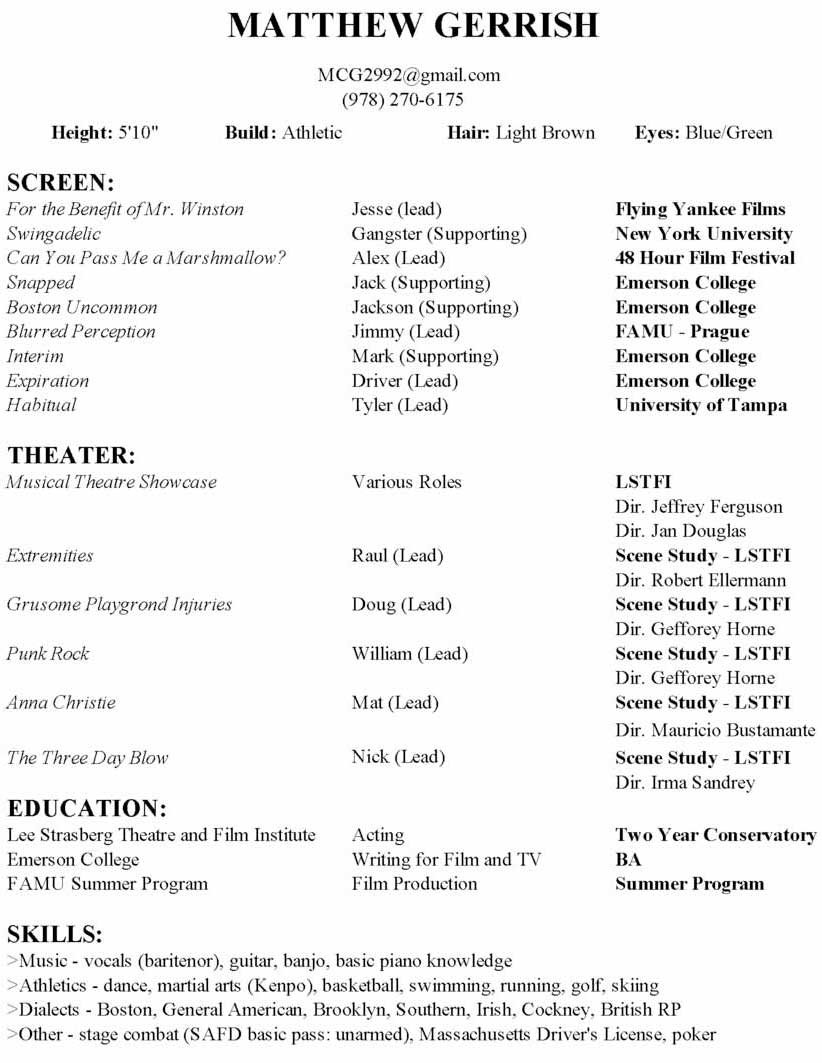A good acting resume is easy to read, and updated as often as you are working or training.
Credits should be listed by genre. You’ll want to separate each genre: Television, Film, Theater, Education, Training. Special Skills, etc. If you’re just starting out, and don’t have any television or film credits yet, then adding any recent theater roles you played is a good place to start.
List experience with most recent credits at the top of each section. Every time you get a new credit, add the name of the project, the type of role you played (For Theater – Lead or Supporting, For TV – Guest Star, Co-Star, etc), and the network/Director’s name (3 separate columns) to your resume.
For example:
Grey’s Anatomy Guest Star ABC / Dir. Chandra Wilson
Include your education and training.. It doesn’t matter what age you are starting out as an Actor, training is essential and something to always highlight on your resume. List the name of any schools you’ve attended, what special acting classes you’ve taken (scene study, improv, etc), and if you did any specialized training (stage combat, etc).
Don’t forget your unique skills. After you list your education and training, highlight the unique skill sets that set you apart from other Actors. Make sure you can perform any of these skills at a pro-level, as you will be competing against other Actors in whatever special skills you mention here.
Highlight any awards or accolades. If you did an independent film and won “Best Actress at Palm Spring International Film Festival,” put an asterisk “*” at the end of the credit, and denote the award at the bottom of the Film section.
Ask your reps for an example. If you already have representation, be sure to ask them for a sample of a great resume for you to model.
Prepare like a pro. If you don’t have representation, be sure to do your homework and research templates for layout and best formatting practices, before submitting to Agents or Managers.


























